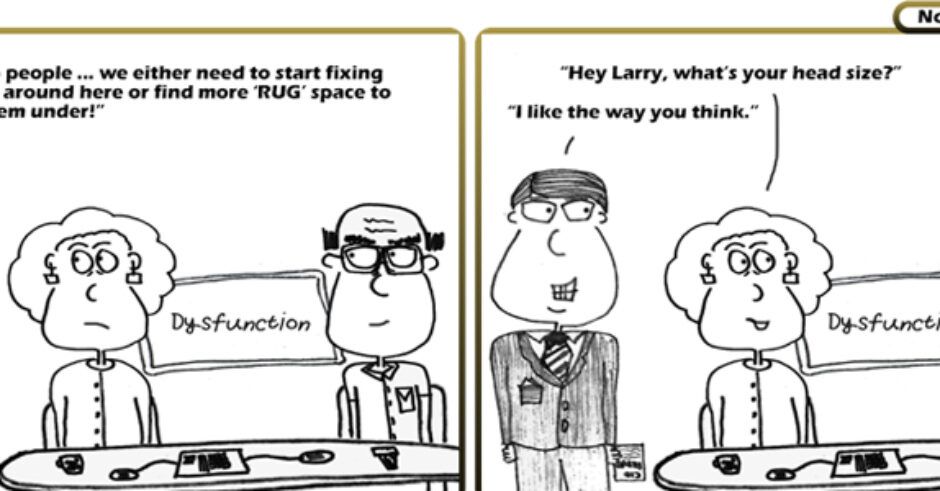Agile shines a light on dysfunction. Once the dysfunction is exposed, you have 2 options: 1) fix it or 2) sweep it back under the rug. Which will you choose?
How does Agile shine a light on dysfunction? All Agile practices are designed to unearth sub-optimizations.
Let’s take the simplest practice, the Daily Standup. One client told me, “we can’t do daily standups because we are all working on so many things, we would spend our whole day in daily standups.” If you are working on so many things that no one can collaborate for 15 minutes on a single item, I wonder how much time you have to actually work on that item? How difficult is it to get a coworker to answer a question? The dysfunction here is that WIP (work in process) is too high, the problem is not the Daily Standup.
What about Prioritization? I find that organizations and teams have the same problem with prioritization; everything is important so what’s the point of prioritizing? Is it beneficial to the company that everything takes longer in order to work on everything at the same time? The dysfunction here is that the company lacks the discipline to optimize its output, the problem is not prioritization.
If you chase two rabbits, both will escape. – Native American Saying
Sweeping it under the rug. Some teams have ingrained dysfunction and exposing it can be scary. People want to be able to save face. When we make all work transparent, by putting all tasks on a Kanban board, everyone can see what you’re doing. Some people do non-value added work, that doesn’t make it up onto the board, or the value is questioned when the tasks are shown. There is an incentive to reject transparency while people adapt to a more value-driven role.
I had a team that had a velocity of 30 points but kept committing to 100 points each sprint. Why would anyone do this? There were two reasons. First, they were getting pressure to meet dates, and the only way they could meet these dates was by overcommitting. Second, they had not sliced their work properly, so they had to do partial work on 100 points over 4 sprints in order to get anything completed. Their solution was to reject the process by carrying points over, instead of fixing the underlying problems of overcommitment and malformed user stories.
Leaders create safety to fix dysfunction. In order to allow dysfunction to surface and be dealt with, leaders need to create safety. Safety often means that the leaders need to mine for and classify the underlying causes as impediments. Leaders cannot fall into the trap of altering the process to fit the dysfunction. Leaders ask themselves and their teams, what is causing difficulty with the process? A leader congratulates people for exposing dysfunction. A leader asks “what can I do or stop doing, that will help?”
Brain Twist: Find one practice that has difficulty in your work environment. Use the 5 whys to explore the reason for the difficulty. Look through the detective lens of searching for dysfunction. Can you enroll your peers or leaders in tackling the dysfunction?
The Business Transformation Network has posted this article in partnership with WorkBytes.




